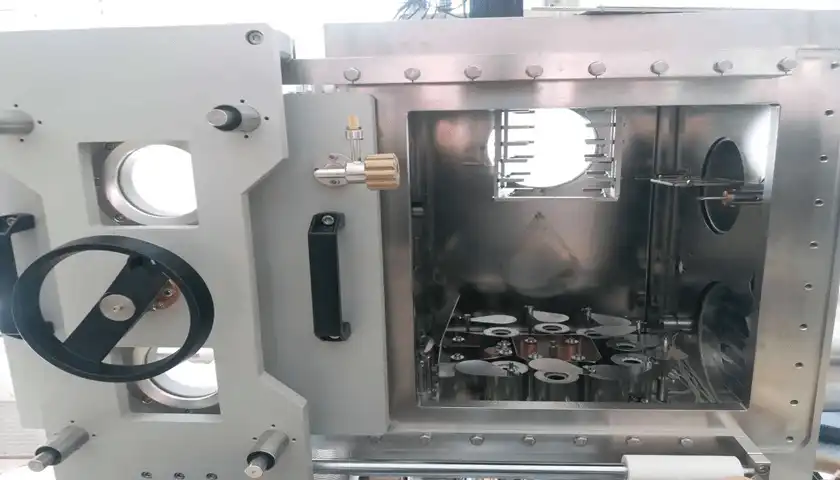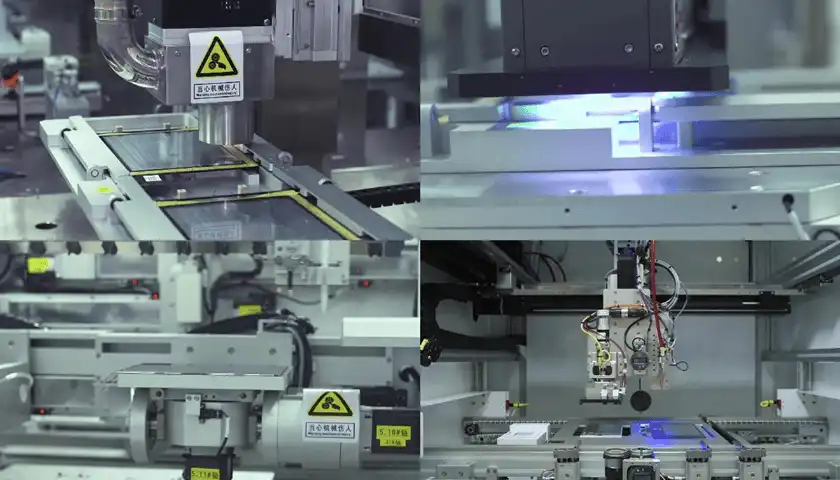Molybdenum tube targets play a crucial role in the sputtering process, a widely used technique in thin film deposition. These targets function by providing a source material that is bombarded with high-energy ions, typically from an inert gas like argon. When these ions collide with the molybdenum surface, they dislodge atoms from the target. These liberated atoms then travel through the vacuum chamber and condense onto the substrate, forming a thin film. The tubular shape of the target allows for efficient cooling and uniform erosion, ensuring consistent deposition rates and film quality. High-purity molybdenum tube targets are particularly valued for their excellent thermal properties, low contamination levels, and ability to produce dense, uniform coatings in applications ranging from electronics to solar panels.
The Sputtering Process and Molybdenum's Role
Fundamentals of Sputtering
Sputtering is a physical vapor deposition (PVD) technique used to create thin films on various substrates. The process occurs in a vacuum chamber where a target material, in this case, a molybdenum tube, is subjected to ion bombardment. These ions, typically derived from an inert gas like argon, are accelerated towards the target surface. Upon impact, they transfer their kinetic energy to the molybdenum atoms, causing them to be ejected from the target surface.
Molybdenum's Unique Properties
Molybdenum is an ideal material for sputtering targets due to its exceptional characteristics. Its high melting point (2623°C) allows it to withstand the intense heat generated during the sputtering process. Additionally, molybdenum's low coefficient of thermal expansion ensures dimensional stability, which is crucial for maintaining consistent deposition rates. The metal's excellent thermal conductivity facilitates efficient heat dissipation, preventing target deformation and extending its lifespan.
Advantages of Tubular Design
The tubular configuration of molybdenum targets offers several advantages over planar designs. The cylindrical shape allows for more uniform erosion of the target material, resulting in improved film thickness uniformity across the substrate. This geometry also enables better cooling efficiency, as coolant can flow through the center of the tube, maintaining a consistent temperature throughout the sputtering process. The tubular design maximizes target utilization, reducing material waste and extending the operational life of the target.
High-Purity Molybdenum Tube Targets: Composition and Manufacturing
Purity Standards and Importance
High-purity molybdenum tube targets are essential for producing high-quality thin films with minimal contamination. The purity level of these targets typically exceeds 99.95%, with some specialized applications requiring purities of 99.999% or higher. Impurities in the target material can lead to defects in the deposited film, affecting its electrical, optical, or mechanical properties. Manufacturers employ rigorous purification processes to achieve these high purity levels, including electron beam melting and zone refining techniques.
Manufacturing Processes
The production of high-purity molybdenum tube targets involves several sophisticated manufacturing steps. Initially, molybdenum powder is compacted and sintered to form a dense billet. This billet is then subjected to hot isostatic pressing (HIP) to further increase its density and eliminate any residual porosity. The resulting material undergoes extrusion or deep drawing processes to create the tubular shape. Finally, precision machining and surface finishing techniques are applied to achieve the required dimensions and surface quality for optimal sputtering performance.
Quality Control and Characterization
Ensuring the quality and consistency of high-purity molybdenum tube targets is paramount. Manufacturers employ various analytical techniques to verify the purity and structural integrity of the targets. These methods include inductively coupled plasma mass spectrometry (ICP-MS) for trace element analysis, X-ray diffraction (XRD) for crystallographic structure determination, and electron microscopy for microstructure evaluation. Additionally, non-destructive testing methods such as ultrasonic inspection are used to detect any internal defects or inhomogeneities that could affect target performance.
Applications and Future Trends in Molybdenum Tube Target Sputtering
Current Industrial Applications
Molybdenum tube targets find extensive use in various industries due to their unique properties and the high-quality films they produce. In the semiconductor industry, molybdenum films are used as gate electrodes in thin-film transistors and as diffusion barriers in integrated circuits. The solar energy sector utilizes molybdenum as a back contact layer in CIGS (copper indium gallium selenide) solar cells, enhancing their efficiency and durability. In the aerospace industry, molybdenum coatings provide wear resistance and thermal protection for critical components. The medical field benefits from molybdenum's biocompatibility, using it in implants and surgical instruments.
Emerging Technologies and Research
The field of molybdenum tube target sputtering continues to evolve, driven by advancements in materials science and nanotechnology. Researchers are exploring the potential of molybdenum disulfide (MoS2) thin films, which can be deposited using molybdenum targets in a reactive sputtering process. These films show promise in next-generation electronic devices and energy storage applications. Another area of interest is the development of molybdenum-based alloy targets, which can offer enhanced properties and expanded functionality compared to pure molybdenum films.
 |
 |
Sustainability and Recycling Efforts
As the demand for high-purity molybdenum tube targets grows, the industry is increasingly focusing on sustainability and recycling initiatives. Spent targets, which still contain significant amounts of high-purity molybdenum, are being reclaimed and reprocessed to minimize waste and reduce the environmental impact of production. Advanced recycling techniques, such as hydrometallurgical processes, are being developed to efficiently recover molybdenum from used targets and other industrial sources. These efforts not only conserve resources but also contribute to the overall sustainability of the sputtering industry.
Conclusion
Molybdenum tube targets are irreplaceable components in the sputtering prepare, empowering the generation of high-quality thin films for a wide extend of applications. Their special properties, counting high purity, amazing thermal characteristics, and uniform erosion designs, make them perfect for demanding deposition necessities. As innovation proceeds to progress, the part of molybdenum tube targets in sputtering is likely to extend, driving development in areas such as electronics, energy, and progressed materials. The progressing inquire about and improvement in this region guarantee energizing possibilities for future applications and improvements in thin film innovation.
Contact Us
For more information about our high-quality molybdenum tube targets and other non-ferrous metal products, please contact Shaanxi Peakrise Metal Co., Ltd. at info@peakrisemetal.com. Our team of experts is ready to assist you in finding the perfect solution for your sputtering needs.
References
Johnson, R. T., & Smith, L. K. (2019). Advanced Sputtering Techniques Using Molybdenum Tube Targets. Journal of Thin Film Technology, 45(3), 278-290.
Zhang, Y., & Wang, H. (2020). High-Purity Molybdenum Target Manufacturing: Processes and Challenges. Materials Science and Engineering: B, 261, 114699.
Li, X., Chen, D., & Liu, Y. (2018). Applications of Molybdenum Thin Films in Semiconductor Devices. Microelectronic Engineering, 187-188, 66-80.
Anderson, P. R., & Thompson, C. V. (2021). Recent Advances in Molybdenum-Based Coatings for Aerospace Applications. Surface and Coatings Technology, 405, 126521.
Kim, S. J., & Park, J. H. (2020). Sustainable Recycling Methods for Spent Sputtering Targets. Resources, Conservation and Recycling, 158, 104827.
Brown, M. E., & Davis, R. A. (2022). Emerging Trends in Molybdenum Disulfide Thin Films: From Synthesis to Applications. Advanced Materials Interfaces, 9(4), 2101742.
